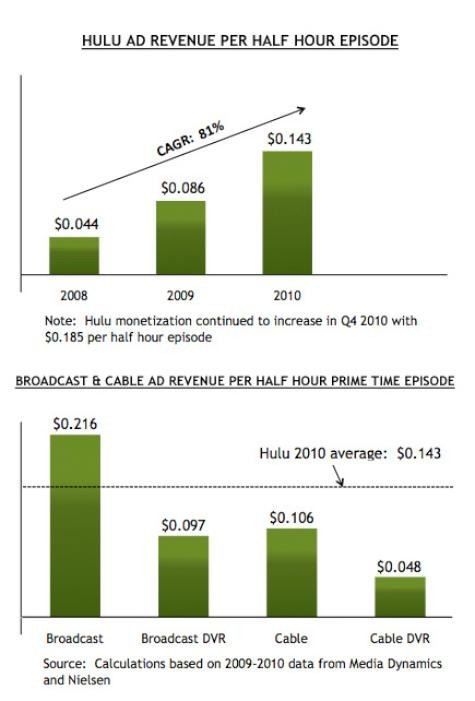
How Will We Get It?
Revenue for online video ads is increasing, according to Kilar.
Hulu’s ad revenue per half-hour stream has tripled since 2008 and is now higher than ad revenue for broadcast DVR, cable and cable DVR advertising—it’s still shy of conventional broadcast revenue but if it keeps growing like it has been, it’ll soon overtake TV ad revenue altogether.
So since advertisers and content providers both want money, and Hulu’s above graphs show that the money’s moving online, TV will continue to move more and more online. Everybody wins except the content distributors like Comcast, but they can just sell more expensive, faster internet access to make up for all the TV that’s moving online, right?
What About Consumers?
We want fewer ads, which Hulu’s actually capable of doing thanks to its “patentable technology” that delivers more efficient and targeted advertising. That’s a good thing. We don’t have to watch as many ads in an online video stream as we’d have to watch during a conventional TV program, and those online ads make more money anyway.
Keep in mind, however, that there’s nothing stopping Hulu from stuffing more ads into a stream except Kilar’s contention that if Hulu tries to serve too many ads, we’ll all go back to watching DVR’d programs so we can skip the ads.
Here’s Kilar’s most important point about consumers, though:
“Consumers also want the freedom to be able to watch TV on whatever screen is most convenient for them, be it a smartphone, a tablet, a PC, or, yes, a TV.”
And it’s a dream that’s repeatedly and systematically killed by the content providers—ABC, NBC, Fox and others–not the content distributors.

